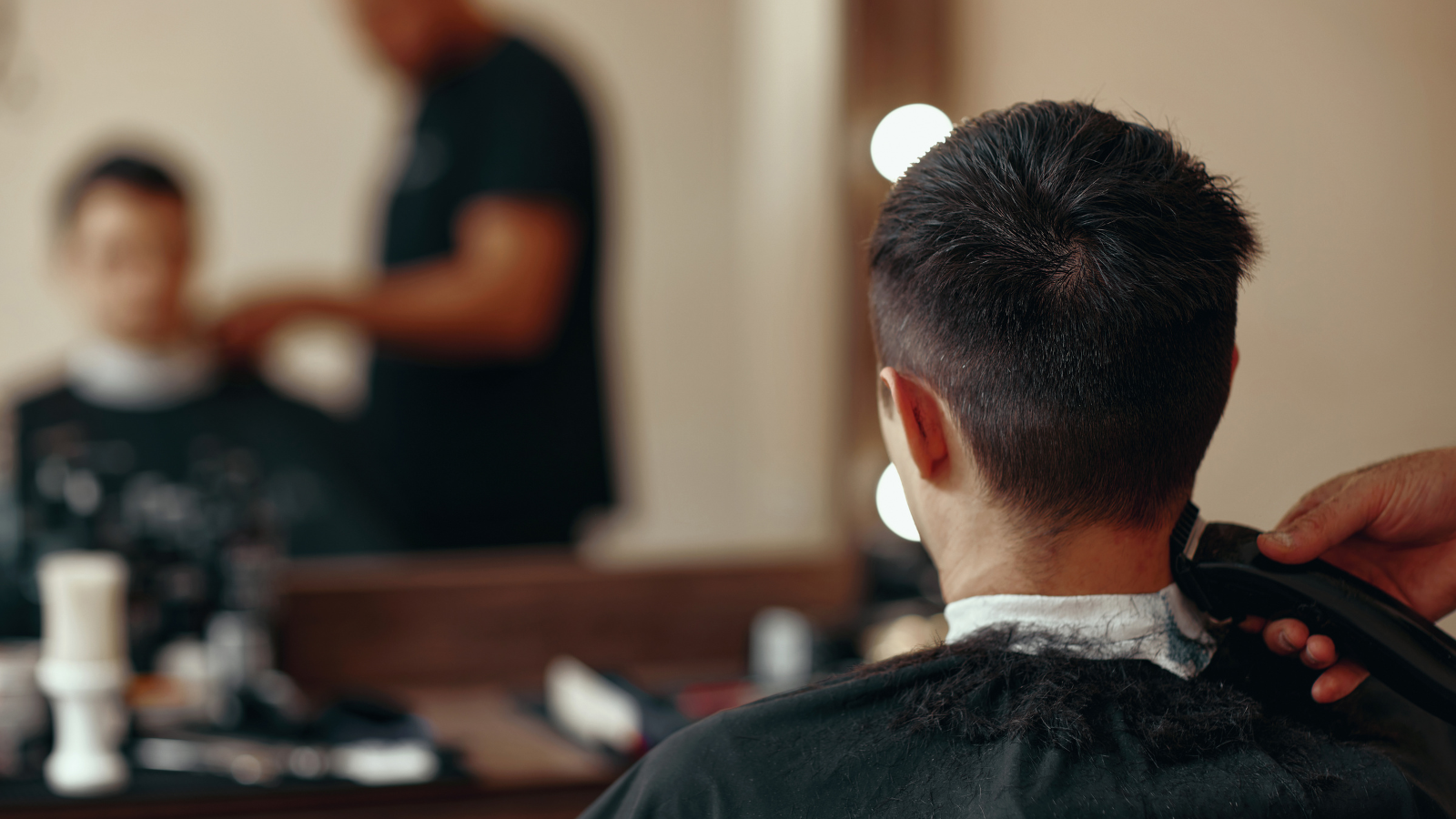The APA has changed its view of masculinity
While the world has been transfixed by Depp v. Heard, another fascinating development has occurred in the US in relation to how gender is viewed. Without any apparent fanfare, the American Psychological Association (APA) Division 51 (Society for the Psychological Study of Men and Masculinities, or SPSMM) has changed their mission statement in a way that suggests the APA are abandoning – to a significant degree - their much-criticised negative view of masculinity.
Both the old and new mission statements are replicated below (see Appendix section), but in summary, the major changes to the mission statement are that it no longer “Promotes the critical study of how gender shapes and constricts men’s lives”, nor “Endeavors to erode constraining definitions of masculinity which historically have inhibited men’s development, their capacity to form meaningful relationships, and have contributed to the oppression of other people”. Also gone is their acknowledgement of a “historical debt to feminist-inspired scholarship on gender”.
In other words, the mission of Division 51 of the APA is no longer to promote the idea that gender constricts men’s lives, nor to erode the traditional notion of masculinity. Furthermore, feminist ideas will no longer be accorded undue recognition by the men’s division, although the preamble to the mission statement (see Appendix) acknowledges the historical influence of the women’s division.
As of now, the mission of Division 51 is to promote “evidence-based psychological practice and the empirical study of how gender roles relate to the physical and emotional health of men and boys”. It is not clear from the mission statement how soon – if ever - corresponding changes will be made to the APA Guidelines for Psychological Practice with Boys and Men, but I eagerly await news of such changes.
”The larger point is not that the new mission statement is beyond criticism, but that it has taken a significant step away from criticising masculinity.”
This is a major development, though not a complete volte-face. For example, although the new mission statement doesn’t mention masculinity at all, the preamble to the mission statement confusingly says: “As our mission statement below describes, SPSMM is dedicated to practice and research addressing the unique issues surrounding masculinities and all individuals identifying as men or boys.” What these “issues” surrounding “masculinities” might be is not explained. Also, for many people the term “social justice” (see Appendix) will ring alarm bells, but I would suggest the larger point is not that the new mission statement is beyond criticism, but that it has taken a significant step away from criticising masculinity.
The APA view of masculinity has been much criticised not because of their previous mission statement, but because of the Guidelines on working with boys and men, first published in August 2018. When promoted by the APA in January 2019 in their Monitor on Psychology magazine, the response was rapid and vigorous e.g. Barry (2019); Whitley (2019); Wright et al (2019), and has never fully gone away e.g. Liddon & Barry (2021).
The criticisms have been of the negative view of masculinity, expressed mostly in Guidelines 1 and 3. In brief, these proposed that masculinity is a merely a social construct with no influence of biology or evolution, and that men’s mental health and behavioural problems are caused by masculinity and patriarchy. Thus for example, sexual violence and domestic abuse are seen as products of “patriarchal masculine norms”, rather than as the products of other factors, such as childhood abuse or poor emotional regulation. Crucially, the guidelines appeared to lack scientific rigour, and the potential impact on therapeutic outcomes for male clients was called into question.
It should be noted that the Guidelines were not all bad. Of the 10 guidelines, Guidelines 1 and 3 were the main focus of criticism, and in fact Guideline 9 – which described approaches to therapy for men and boys - has been singled out for praise (Liddon & Barry, 2021). The disparity of quality of the guidelines is most likely due to the disparity of authors involved in the guidelines, although it is not clear in the document who the authors of each guideline were.
Although the changes have been only so far to the mission statement rather than the Guidelines, the APA are to be congratulated for making this first positive step away from the hornet’s nest of contentious ideas. Because the APA is viewed by many as the default world leader in mental health, and has influence internationally, it is hoped that others who have also recently adopted controversial ideas about masculinity can now also move on from those ideas. I am thinking mainly of the Australian Psychological Society (APS), and the authors of the Power Threat Meaning Framework (PTMF) in the UK, both of whose guidelines on men previously attracted little attention.
“This one sentence is a death sentence as far as understanding men and boys is concerned”
The Australian guidelines are brief and mostly very reasonable, but a relatively small part poisons the whole of the document: “The negative consequences for men and boys related to gender role conflict and social constructions of masculinities can include anxiety, depression, homophobia, communication problems, difficulties with intimacy, marital conflict, restricted emotionality, violence towards women and other men, and substance abuse (O’Neill, 2008)” (Section 1.4). In just a few words, this one sentence is a death sentence as far as understanding men and boys is concerned. Although the rest of the document may be perfectly credible, in the context of the statement about “masculinities” even the credible parts sound ironic. For example, the advice to “avoid discriminating unfairly against people on the basis of age, religion, sexuality, ethnicity, gender, disability, or any other basis proscribed by law” (Section A.1.1) rings hollow when Section 1.4 appears biased against masculinity.
The UK doesn’t yet have psychological guidelines for working with men. The nearest we have is the PTMF, a document that has been widely publicised through the British Psychological Society (BPS) – though not as a BPS document - since its launch in 2018. It’s remit is not specifically about men, but the section on men (pages 124-8 of the full version) echos the same aching flaws seen in APA Guidelines 1 and 3.
It is interesting that in all three documents outlined here - the APA, APS, and PTMF - the inclusion of just a short toxic section spoils the rest of the document. For example, with the current APA guidelines it seems difficult to work congruently with a male client using methods described in Guideline 9 while simultaneously thinking of their presenting problem as being caused by some combination of their masculinity and patriarchy. Indeed a survey of therapists last year found those who work according to Guideline 9 don’t see clients as described in Guidelines 1 and 3, emphasising the incongruence of the APA guidelines as they currently stand.
In conclusion, I offer my heartfelt congratulations to the APA for having the courage and good sense in taking steps to revise their views on masculinity. I hope this is followed by other good news, such as corresponding changes to their guidelines on therapy for boys and men, and similar improvements, where necessary, to policy documents of other organisations around the world.
Appendix
The previous mission statement of the SPSMM
“The Society for the Psychological Study of Men and Masculinities (SPSMM):
Promotes the critical study of how gender shapes and constricts men’s lives.
Committed to an enhancement of men’s capacity to experience their full human potential.
Endeavors to erode constraining definitions of masculinity which historically have inhibited men’s development, their capacity to form meaningful relationships, and have contributed to the oppression of other people.
Acknowledges its historical debt to feminist-inspired scholarship on gender, and commits itself to the support of groups such as women, gays, lesbians and people of color that have been uniquely oppressed by the gender/class/race system.
Contends vigorously that the empowerment of all persons beyond narrow and restrictive gender role definitions leads to the highest level of functioning in individual women and men, to the most healthy interactions between the genders, and to the richest relationships between them”.
The new mission statement of the SPSMM “Adopted April, 2022”.
“The Society for the Psychological Study of Men and Masculinities (SPSMM, Division 51 of the American Psychological Association) promotes evidence-based psychological practice and the empirical study of how gender roles relate to the physical and emotional health of men and boys. Members of the Division include psychologists, professionals in related fields, and graduate students who conduct research, training, consultation, education, advocacy, and clinical practice to enhance the opportunities for men and boys to experience their full human potential and to lead healthier lives. Our work is done through a multicultural lens that emphasizes social justice for all with a recognition of the need to study, to challenge, and to improve societal systems. In order to meet our mission, Division 51 sponsors a professional journal, The Psychology of Men & Masculinities, special interest groups, task forces, conferences, retreats, a mentoring program, continuing education, leadership development, and a variety of opportunities to participate in its governance along with social events.”
Preamble to the new mission statement
The Society for the Psychological Study of Men and Masculinities (SPSMM) first became a division of the American Psychological Association in 1995 in recognition of several growing areas of feminist and social learning-inspired scholarship in the field. Since then, it has grown and evolved into a diverse group of clinical, counseling, social, and developmental psychologists, graduate students, and professionals in related fields. As our mission statement below describes, SPSMM is dedicated to practice and research addressing the unique issues surrounding masculinities and all individuals identifying as men or boys. You can learn more about the history of the division here, including the contributions of other social justice-oriented divisions such as Division 35 (Society for the Psychology of Women) Division 17 (Society for Counseling Psychology), Division 44 (Society for the Psychology of Sexual Orientation and Gender Diversity), and Division 45 (Society for the Psychological Study of Culture, Ethnicity, and Race).
Scroll down to join the discussion
Disclaimer: This article is for information purposes only and is not a substitute for therapy, legal advice, or other professional opinion. Never disregard such advice because of this article or anything else you have read from the Centre for Male Psychology. The views expressed here do not necessarily reflect those of, or are endorsed by, The Centre for Male Psychology, and we cannot be held responsible for these views. Read our full disclaimer here.
Like our articles?
Click here to subscribe to our FREE newsletter and be first
to hear about news, events, and publications.
Have you got something to say?
Check out our submissions page to find out how to write for us.
.















































